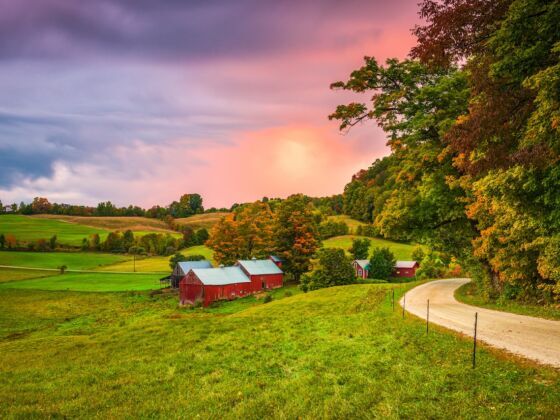The clean air hits as soon as you step off the plane. Mount Mansfield rises in the distance. Heady thoughts of craft beer and other local goodies propel you forward. For those of us who grew up in Vermont, it’s easy to forget just how much it offers. But as a visitor, you feel like you’ll never have enough time to enjoy all the farm-to-table fare, maple creemees, cider tastings, and scenic trails the Green Mountain State does so well. Whether you travel for art or history, food or drinks, nature or road trips, there’s a perfect region for your visit. Here are six of the many ways to see Vermont.
For the arts enthusiasts: Lower Connecticut River
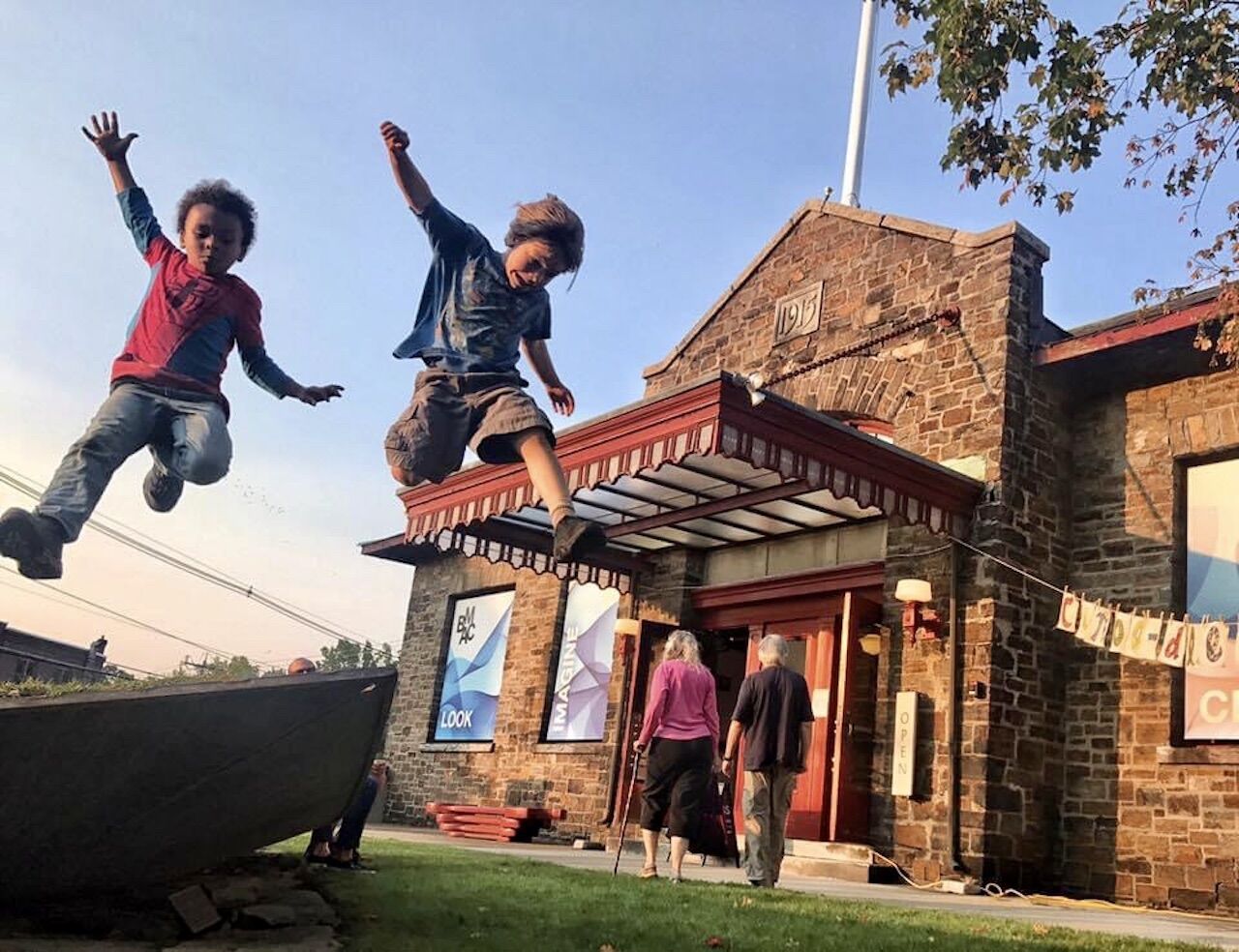
Photo: Vermont Tourism
The largest city in southern Vermont’s Lower Connecticut River region, Brattleboro is known for its rich arts scene, from music and literature to crafts and beyond. One must-visit when you’re here is the Brattleboro Museum & Art Center, featuring six galleries with rotating exhibits, artist talks, workshops, performances, and studio tours — all set within a restored historic train station.
Ten miles north in Putney, the Yellow Barn Summer Festival runs through June and July and showcases chamber music spanning eras and genres. Later in the year, the Putney Craft Tour lets art lovers explore the off-the-beaten-path studios of blacksmiths, glass blowers, potters, jewelers, weavers, woodworkers, and artisan cheesemakers.
If vintage is your vibe, continue heading north to Bellows Falls, where the Windham Antique Center houses 7,000 square feet of antique hardware, unique restored lighting, jewelry, and a natural history shop. Keep going until you hit Artisans Park in Windsor, a one-stop shop with breweries, outfitters, glass blowers, and more. Meander the Path of Life Sculpture Garden while there — 18 works of art illustrating human life cover 14 acres.
For the locavores: Greater Burlington
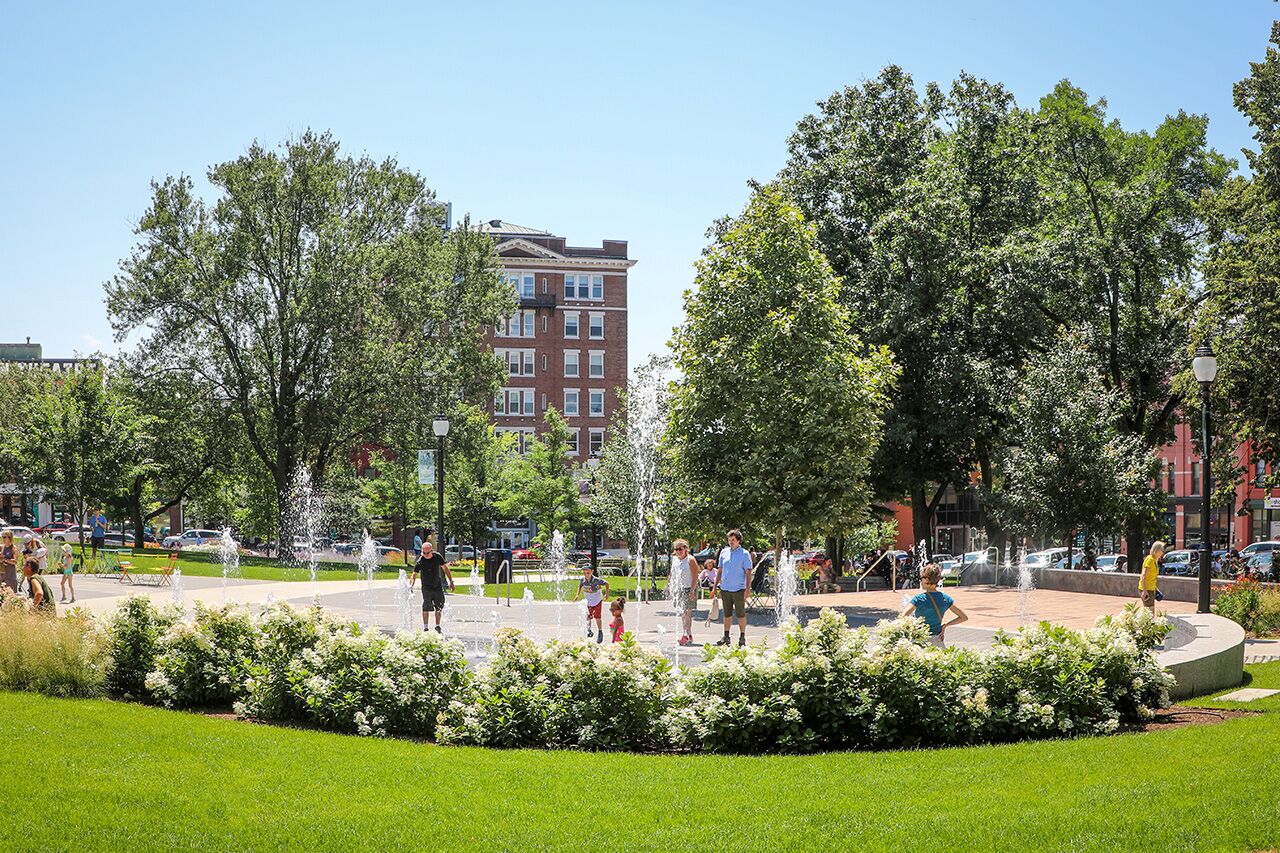
Photo: Vermont Tourism
It stands to reason that Vermont’s most populous city packs in some of its best local stops. Start your visit to the Greater Burlington region at Adam’s Berry Farm — and come hungry, as you can nibble on as much fruit as you can pick (and even get in some guided morning yoga among the crops).
Next, head downtown to Church Street Marketplace’s pedestrian-friendly thoroughfare, which is lined with local businesses. Crow Bookshop has an amazing selection of new and used books. Frog Hollow sells jewelry, ceramics, and art made by more than 100 regional artists, while Common Deer stocks an even wider variety of goodies made by more than 500 different North American producers. Locally owned boutiques like the Vermont Flannel Company are also perfect for souvenirs. When hunger strikes, plan to stop at James Beard nominees Honey Road and Hen of the Wood. But be sure to save room for the Champlain Valley Dinner Train one evening — it’s a three-hour round-trip from Burlington to Vergennes, during which you’ll enjoy a three-course meal as the Vermont landscape rolls by.
For a more hands-on pastoral experience, carve out time to visit Shelburne Farms while you’re in the area. The sustainability-minded farm is a National Historic Landmark and has 10 miles of trails, farm animals to hang out with, and cheese-making demonstrations, among many other attractions.
For the road trippers: Northeast Kingdom Byway
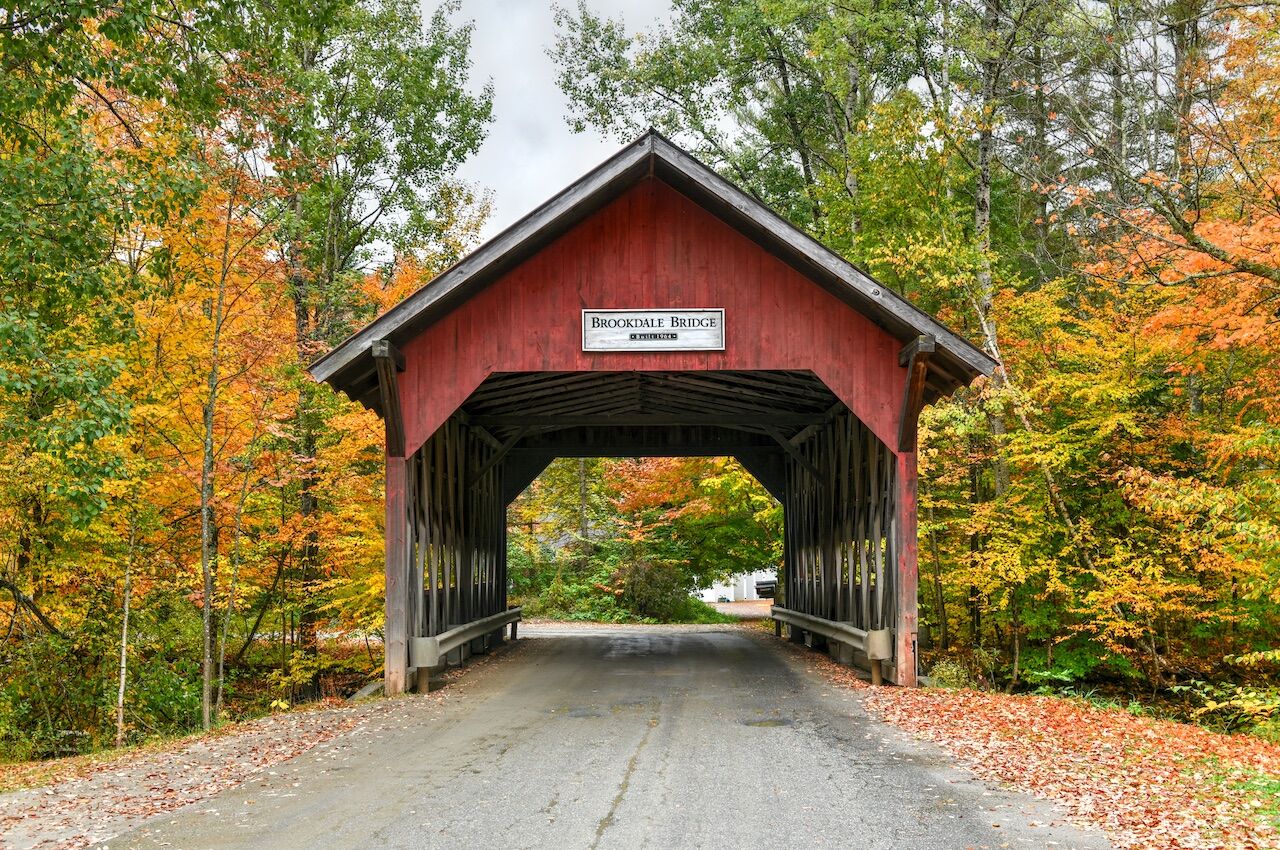
Photo: Felix Lipov/Shutterstock
Ten scenic byways cross the state, but the 51-mile Northeast Kingdom Byway is the one that’ll lead you to some of Vermont’s best-kept secrets. Flanked by bucolic landscapes, you’ll encounter iconic covered bridges, small towns, general stores that are more like community hubs, and much more as you drive.
Along the way, plan to stop at the pet-friendly Dog Mountain for 150 acres of hiking trails, the Stephen Huneck Gallery, and the quaint Dog Chapel. If you’re winding the roads in fall, check out Sweet Seasons Farm & Artisans Confections in St. Johnsbury for apple picking, or make your way to Maple Grove Farms for a look into Vermont maple syrup production (and be sure to taste one of the farm’s legendary maple creemees before you go).
For one-of-a-kind photo opps on your road trip, spend a few extra minutes at some of Vermont’s most famous covered bridges. Lyndon has three: Chamberlain Mill, Schoolhouse, and Sanborn. Montgomery, Vermont’s self-proclaimed “Covered Bridge Capital,” has twice as many. And for a special souvenir from your journey, stop by the Northeast Kingdom Artisans Guild — exhibits rotate every six weeks, and all work is original.
For the outdoor adventurers: Deerfield Valley
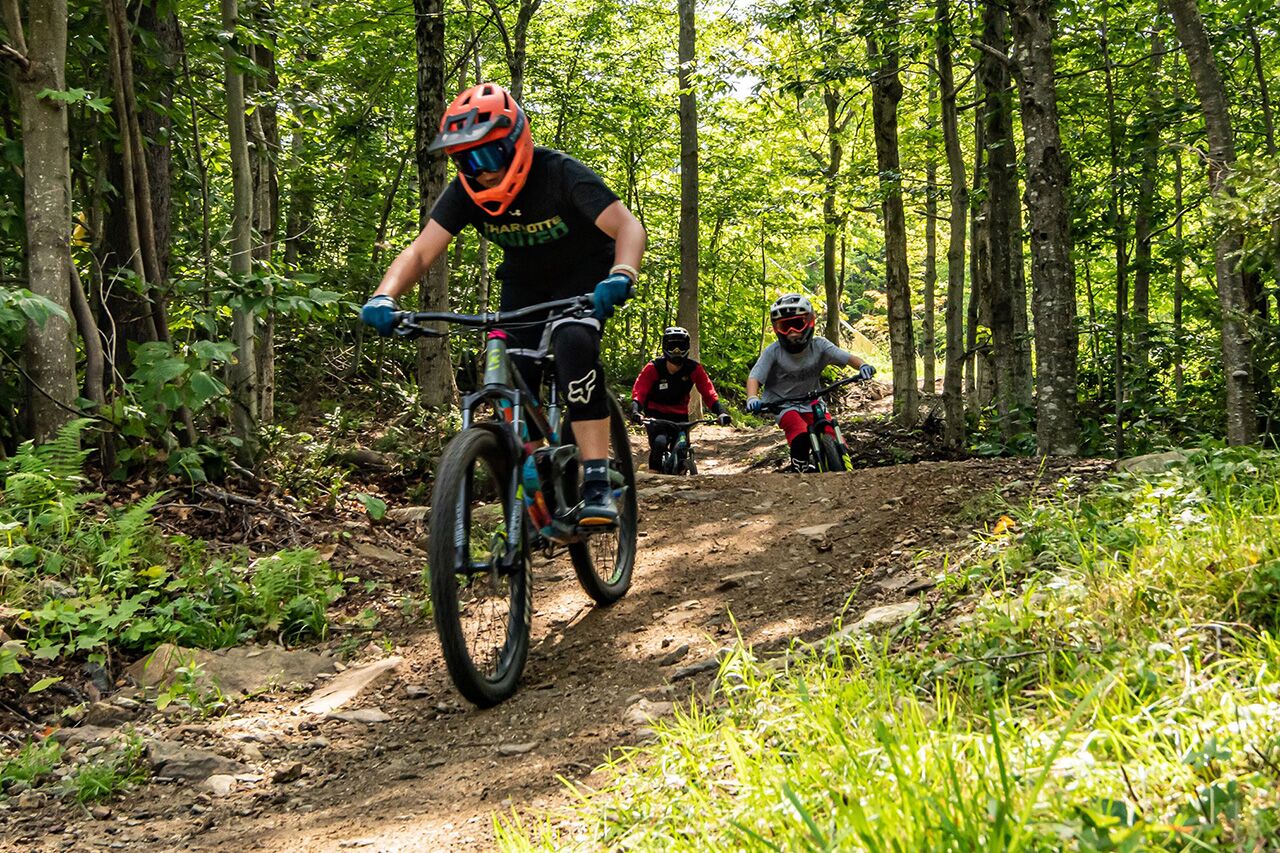
Photo: Zachary Gould/Stratton Mountain Resort
Outdoor recreation is easy to come by in southern Vermont’s oft-overlooked Deerfield Valley. If paddling fills your dreams, Harriman Reservoir has over 2,000 acres of coves and untouched shoreline to explore. Just to the north, Somerset Reservoir offers 6.5 miles of serene shoreline for a peaceful day on Vermont’s largest “wild” lake. Keep an eye out for loons, ducks, moose, deer, and black bears as you enjoy the state’s great outdoors.
There’s whitewater rafting on the West River with Class II and III rapids, 10 miles of downhill mountain bike trails at Stratton Mountain Resort, and hiking trails along the spine of the Green Mountains. And then there’s the skiing. Stratton Mountain transforms into 670+ acres of skiable terrain in the winter, while Mount Snow is where some of the world’s best freestyle skiers train. Come winter there’s epic snowmobiling across the region, too. You could visit the Deerfield Valley multiple times a year and still have outdoor surprises in store for your next trip.
For the beer and cider lovers: Champlain Valley
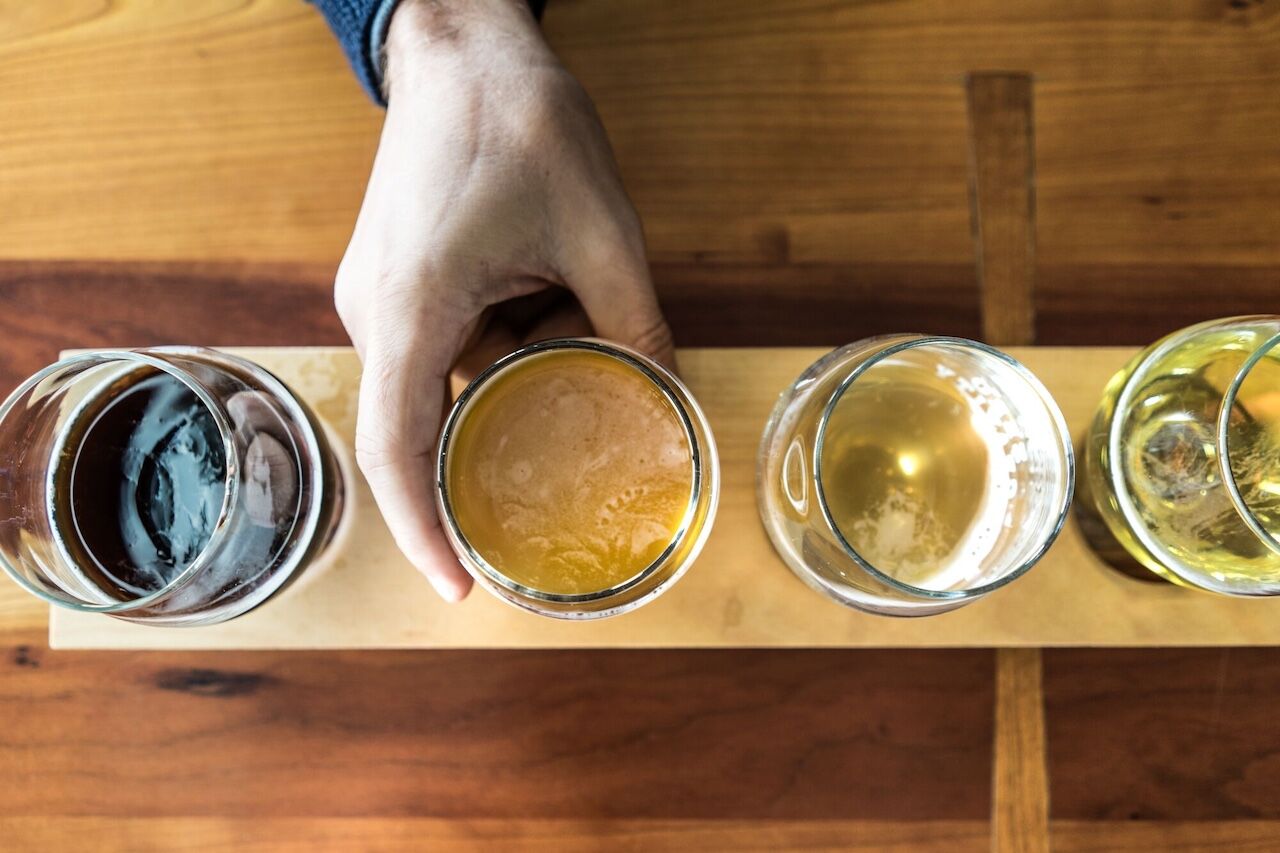
Photo: Vermont Tourism
It’s not hard to plan a trip around beer and spirits in Vermont, but the Champlain Valley region is a gateway to some you may not have sampled. Champlain Orchards is a family-owned operation that produces four hard ciders and an ice cider in the winter. Woodchuck Hard Cider can be found in stores everywhere, but a visit to the cidery in Middlebury opens the door to a self-guided tour or tasting of some of the 20 ciders on tap.
Shacksbury Cider has the Lost Apple Project ciders, crafted from ancient varieties of apples foraged from abandoned orchards. Golden Rule Mead uses 100 percent Vermont-origin raw honey to brew its “honey wine.” And for the beer aficionados, Middlebury’s Drop-In Brewing Co. has over 30 years of experience with craft brews, while Foley Brothers Brewing in Brandon utilizes Vermont ingredients, including locally grown hops, Vermont maple syrup, and ginger wheat. For hyper-local beer, check out Hired Hand Brewing — their ingredients are sourced minutes from the farm and brewery in Vergennes.
For the history buffs: Capital Region
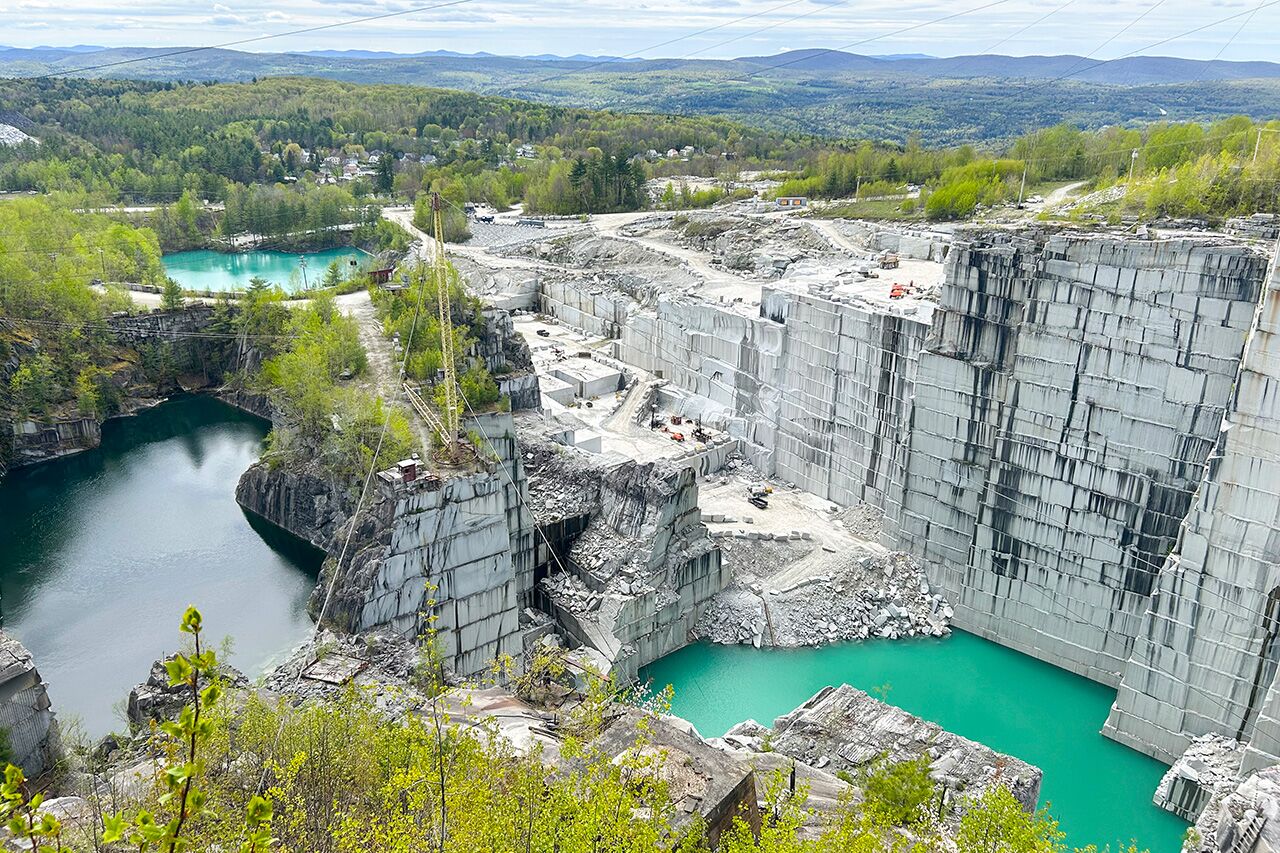
Photo: Rock of Ages
Vermont’s seat of government holds many opportunities for the history-minded traveler. At the Vermont History Museum in Montpelier, explore Abenaki wigwams and other artifacts from the “People of the Dawn,” a mural of vignettes showcasing 350 years of life around the Green Mountain State, and more.
Elsewhere in the Capital Region, near Barre, Rock of Ages offers a peek into Vermont’s signature gray granite through the world’s largest deep-hole quarry. In Barre proper, stop by the Hope Cemetery to behold the skill of generations of granite sculptors on full display. Close out your visit with a performance at the Barre Opera House, built in 1899, or head back to Montpelier for the Farmers Night Concert Series to see artists from around the state perform in the House Chamber on Wednesday nights during the legislative session.
If you’re visiting in September, don’t miss RockFire. Held in Websterville’s abandoned quarries, the highlight is the 1.5-mile FireWalk path of candles, luminaries, and bonfires leading to fire-lit art installations and music that light up the surrounding rock.
Whether that first blanket of white snow covers the ground, the leaves are starting to shift into a fiery blaze, or summer’s warmth embraces you outdoors during your visit, there’s always a farm at which to sample cheese, a trail to explore, a gallery to wander, a slope to shred, or a slice of history to appreciate somewhere in the state. Which Vermont calls loudest to you?

